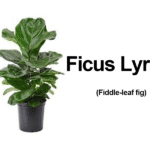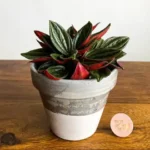Understanding Root Rot: A Hidden Threat to Indoor Plants
Root rot is one of the most common and destructive issues indoor plant enthusiasts face. Often sneaking up without warning, this problem can turn a healthy, thriving houseplant into a wilted mess in just a few days. The tricky part? It’s happening underground, where it’s not immediately visible. But learning to recognize, prevent, and treat root rot can save your plants and help you grow your indoor jungle with confidence.
What Is Root Rot and What Causes It?
Root rot is a disease affecting the roots of plants, generally caused by one of two things: excess moisture or harmful fungi and bacteria. These culprits thrive in overly wet, poorly aerated soil, attacking the roots and preventing them from delivering water and nutrients to the plant.
Common Causes of Root Rot:
- Overwatering: The leading cause of root rot in houseplants. When soil stays wet too long, roots cannot access oxygen and begin to decay.
- Poor drainage: Pots without drainage holes or soils that retain too much water create the perfect environment for rot.
- Contaminated soil: Using previously infected soil can transfer fungal spores to healthy plants.
- Improper container choice: Large pots hold more water than needed for small root systems, increasing the risk of waterlogging.
Recognizing the Symptoms Early
Because root rot begins underground, by the time the symptoms appear above the soil, the damage is often already severe. However, early intervention can still make a difference.
Watch for These Warning Signs:
- Yellowing leaves: Often the first sign, especially if leaves begin to wilt while the soil still feels wet.
- Leaf drop: A plant shedding healthy-looking leaves may be suffering from water stress below the soil.
- Stunted growth: An otherwise healthy plant that suddenly stops growing or producing new leaves.
- Mushy or black roots: When removed from the pot, healthy roots should be firm and white. Rotten roots are soft, dark, and may have a foul smell.
- Soil that stays saturated: Soil that remains wet for more than a couple days after watering is a red flag, especially in winter months.
Steps to Save a Plant with Root Rot
If you suspect your indoor plant has root rot, don’t panic! Depending on the extent of the damage, it may still be saved. Prompt action gives your plant the best chance of recovery.
Step-by-Step Treatment:
- Remove the plant from its pot: Carefully slide the plant out and gently shake off the damp soil. Do this over newspaper or a sink for easy cleanup.
- Trim the affected roots: With sterilized scissors or pruners, remove all mushy, blackened, or foul-smelling roots. Try to leave only healthy, firm, white roots behind.
- Let the plant air dry: Allow the roots to dry for several hours in a shaded, well-ventilated area. This helps prevent further fungal spread.
- Repot with fresh soil: Choose a clean pot with good drainage and fill it with a fresh, well-draining potting mix (like cactus mix or one amended with perlite).
- Water mindfully: Water only when the top 1–2 inches of soil are dry to the touch. Stick your finger into the soil to check before watering.
- Monitor recovery: Over the next few weeks, watch closely for new growth. Keep your plant in bright, indirect light and avoid fertilizing until it rebounds.
Preventing Root Rot in Indoor Plants
Prevention is always the best cure. Keeping your plant care and soil management practices in check will greatly reduce the chance of root rot becoming an issue in the first place.
Helpful Prevention Tips:
- Choose the right pot: Always use pots with drainage holes. This allows excess water to escape and prevents soggy soil buildup.
- Let the soil dry: Overwatering is a common beginner mistake. Always assess the soil before watering—even moisture-loving plants like peace lilies or ferns benefit from brief dry periods.
- Use quality potting mix: Invest in a potting mix designed for your specific plant type. Consider mixing in sand, orchid bark, or perlite to improve drainage.
- Water based on season: Most houseplants require less water in the winter when growth slows. Adjust your habits with the seasons.
- Keep pots clean: When repotting, always wash old pots in hot, soapy water or disinfect them with a bleach solution to kill residual pathogens.
Recovery Advice: Support After Saving a Plant
After treatment, plants need time and care to bounce back from root rot. Don’t be discouraged if recovery is slow—what’s important is supporting your plant through this healing phase.
Supportive Care Includes:
- Reducing light stress: Place the plant in bright but indirect sunlight while it regains strength. Too much direct light can stress the plant further.
- Holding off on fertilizer: Avoid fertilizing for at least a month so the roots aren’t overwhelmed before they can reestablish.
- Quarantining the plant: Keep it separate from other houseplants until you’re sure it’s healthy, especially if fungus was involved.
- Monitoring soil habits: Going forward, track how quickly your new potting mix dries out so you can adjust your watering routine accordingly.
Plants That Are Most Prone to Root Rot
Some indoor plants are naturally more sensitive to overwatering and poor soil conditions. Knowing which of your plants are more vulnerable can help you apply extra care.
- Snake Plants (Sansevieria): These succulents require infrequent watering and are easily harmed by soggy soil.
- ZZ Plants: Hardy but prone to rot if overwatered.
- Pothos: Generally resistant, but can decline rapidly if sitting in waterlogged soil.
- Fiddle Leaf Fig: Sensitive to both under- and overwatering, making it a trickier plant to manage.
Conclusion: Root Rot Doesn’t Have to Spell Disaster
While root rot may seem like a death sentence for indoor plants, with early detection and the right care steps, many can be brought back to health. The key is maintaining a healthy root environment through proper watering, good soil, and ample drainage. Remember, less is often more when it comes to watering indoor plants. By tuning into your plant’s needs and watching for signs of stress, you can prevent root rot and help your houseplants thrive for years to come.
Helpful Tip:
A moisture meter is a great tool for beginners looking to improve watering habits. It takes the guesswork out of knowing when your plants actually need water, reducing the risk of overwatering.
References
- Pileggi, D. (2021). Houseplants for Beginners. Rockridge Press.
- Trejo, L. (2020). Plantopedia: The Definitive Guide to Houseplants. Laurence King Publishing.
- Pennisi, B.V., & Thomas, P.A. (2018). Watering Houseplants. University of Georgia Extension. Retrieved from https://extension.uga.edu/publications








